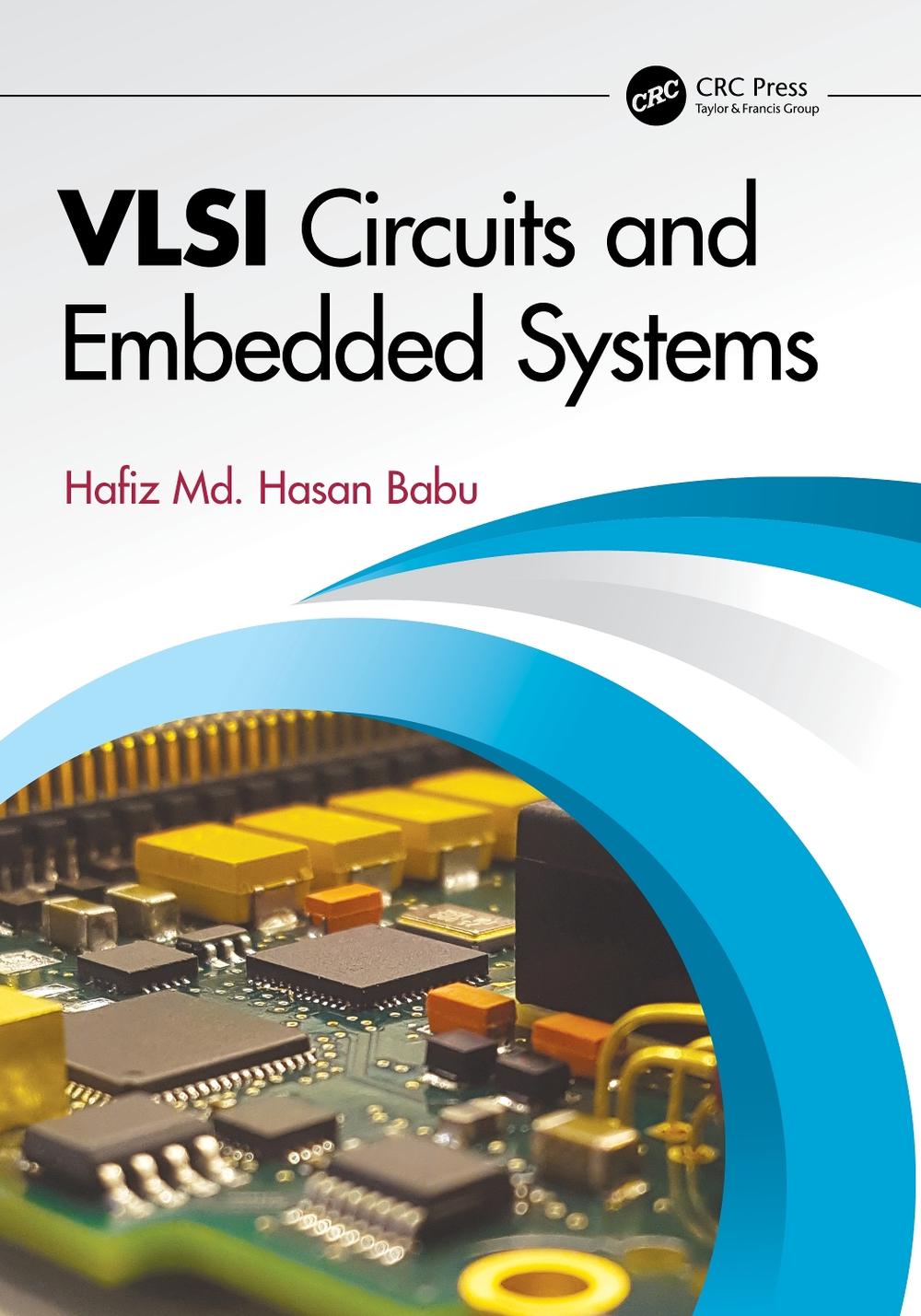
When you click on links to various merchants on this site and make a purchase, this can result in this site earning a commission. Affiliate programs and affiliations include, but are not limited to, the eBay Partner Network.
VLSI Circuits and Embedded Systems by Hafiz Md. Hasan Babu Paperback Book

- Item No : 156901904908
- Condition : Brand New
- Brand : No brand Info
- Seller : the_nile
- Current Bid : US $71.80
-
* Item Description
-
The Nile on eBay

VLSI Circuits and Embedded Systems
by Hafiz Md. Hasan Babu
This book explores the designs of VLSI circuits and embedded systems. As a whole, core researchers, academicians, and students will get the complete picture of VLSI Circuits and Embedded Systems and their applications.
FORMAT
PaperbackCONDITION
Brand New
Publisher Description
Very Large-Scale Integration (VLSI) creates an integrated circuit (IC) by combining thousands of transistors into a single chip. While designing a circuit, reduction of power consumption is a great challenge. VLSI designs reduce the size of circuits which eventually reduces the power consumption of the devices. However, it increases the complexity of the digital system. Therefore, computer-aided design tools are introduced into hardware design processes. Unlike the general-purpose computer, an embedded system is engineered to manage a wide range of processing tasks. Single or multiple processing cores manage embedded systems in the form of microcontrollers, digital signal processors, field-programmable gate arrays, and application-specific integrated circuits. Security threats have become a significant issue since most embedded systems lack security even more than personal computers. Many embedded systems hacking tools are readily available on the internet. Hacking in the PDAs and modems is a pervasive example of embedded systems hacking. This book explores the designs of VLSI circuits and embedded systems. These two vast topics are divided into four parts. In the book's first part, the Decision Diagrams (DD) have been covered. DDs have extensively used Computer-Aided Design (CAD) software to synthesize circuits and formal verification. The book's second part mainly covers the design architectures of Multiple-Valued Logic (MVL) Circuits. MVL circuits offer several potential opportunities to improve present VLSI circuit designs. The book's third part deals with Programmable Logic Devices (PLD). PLDs can be programmed to incorporate a complex logic function within a single IC for VLSI circuits and Embedded Systems. The fourth part of the book concentrates on the design architectures of Complex Digital Circuits of Embedded Systems. As a whole, from this book, core researchers, academicians, and students will get the complete picture of VLSI Circuits and Embedded Systems and their applications.
Author Biography
Professor Dr. Hafiz Md. Hasan Babu is currently working as a Professor in the Department of Computer Science and Engineering, University of Dhaka, Bangladesh. He is also the former Chairman of the same department. Recently, he has completed his tenured as Pro-Vice-Chancellor of National University, Bangladesh, where he was on deputation from the Department of Computer Science and Engineering, University of Dhaka, Bangladesh. For his excellent academic and administrative capability, he also served as the Professor and founding Chairman of the Department of Robotics and Mechatronics Engineering, University of Dhaka, Bangladesh. He served as a World Bank Senior Consultant and General Manager of the Department of the Information Technology & the Department of Management Information Systems of Janata Bank Limited, Bangladesh. Dr. Hasan Babu was the World Bank Resident Information Technology Expert of the Supreme Court Project Implementation Committee, Supreme Court of Bangladesh. He was also the Information Technology Consultant of Health Economics Unit and the Ministry of Health and Family Welfare in the project "SSK (Shasthyo Shurokhsha Karmasuchi) and Social Health Protection Scheme" under the direct supervision and funding of German Financial Cooperation through KfW.
Table of Contents
Part-1: Decision Diagrams (DDs) Chapter 1: Shared Multi-Terminal Binary Decision DiagramsChapter 2: Multiple-Output Functions Chapter 3: Shared Multiple-Valued DDs for Multiple-Output FunctionsChapter 4: Heuristics to Minimize Multiple-Valued DDsChapter 5: TDM Realizations of Multiple-Output Functions Chapter 6: Multiple-Output Switching FunctionsPart-2: An Overview About Design Architectures of Multiple-Valued CircuitsChapter 7: Multiple-Valued Flip-Flops using Pass Transistor LogicChapter 8: Voltage-Mode Pass Transistor-based Multi-Valued Multiple-Output Logic CircuitsChapter 9: Multiple-Valued Input Binary-Valued Output FunctionsChapter 10: Digital Fuzzy Operations using Multi-Valued Fredkin GatesChapter 11: Multiple-Valued Multiple-Output Logic Expressions using LUTPart-3: Programmable Logic DevicesChapter 12: LUT-Based Matrix Multiplication Using Neural NetworksChapter 13: Easily Testable PLAs using Pass Transistor LogicChapter 14: Genetic Algorithm for Input Assignment for Decoded-PLAsChapter 15: FPGA-based Multiplier using LUT Merging TheoremChapter 16: Look-Up Table-based Binary Coded Decimal AdderChapter 17: Place and Route Algorithm for Field Programmable Gate ArrayChapter 18: LUT-based BCD Multiplier DesignChapter 19: LUT-based Matrix Multiplier Circuit using Pigeonhole PrincipleChapter 20: BCD Adder using a LUT-based Field Programmable Gate ArrayChapter 21: Generic Complex Programmable Logic Device BoardChapter 22: FPGA-based Programmable Logic Controller Part-IV: Design Architectures of Advanced Digital CircuitsChapter 23: Parallel Computation of Quotients and Partial Remainders to Design Divider CircuitsChapter 24: Synthesis of Boolean Functions using TANT NetworksChapter 25: Asymmetric High Radix Signed Digital Adder using Neural NetworksChapter 26: Wrapper/TAM Co-Optimization and Constrained Test Scheduling for SOCs using Rectangle Bin PackingChapter 27: Static Random Access Memory using MemristorChapter 28: A Fault Tolerant Approach to Microprocessor DesignChapter 29: Applications of VLSI Circuits and Embedded Systems
Details
ISBN1032216107Author Hafiz Md. Hasan BabuPages 464Publisher Taylor & Francis LtdYear 2024ISBN-13 9781032216102Format PaperbackPublication Date 2024-10-04Imprint CRC PressPlace of Publication LondonCountry of Publication United KingdomAlternative 9781032216089DEWEY 621.395Illustrations 49 Tables, black and white; 244 Line drawings, black and white; 30 Halftones, black and white; 274 Illustrations, black and whiteAudience Tertiary & Higher EducationUK Release Date 2024-10-04ISBN-10 1032216107


-
- NO GRID Survival Projects
- $ 37.00
















